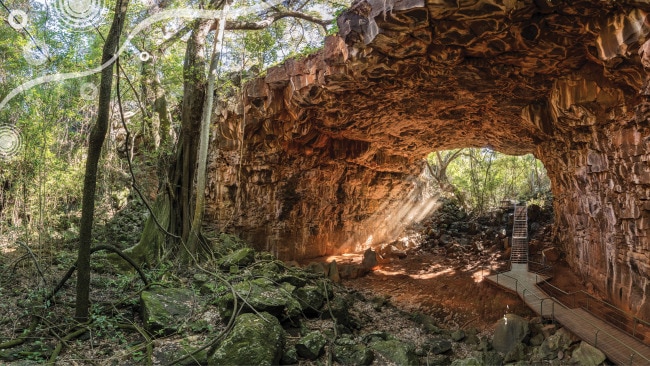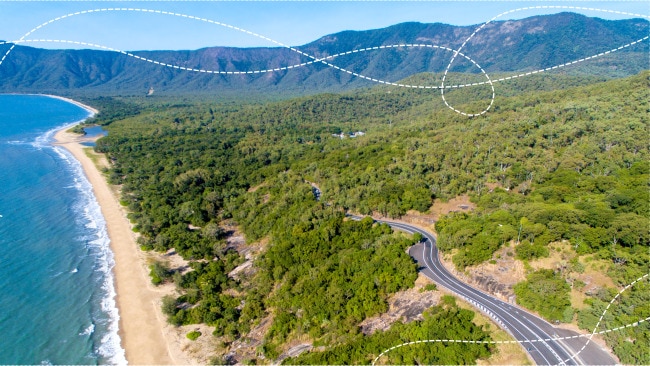Save your skin – and your life
Skin cancer can be one of the most aggressive and dangerous forms of cancer – but it’s also one of the most preventable. Cancer Council SA is encouraging all Australians to be SunSmart by learning the difference between heat and UV radiation
Skin cancer can be one of the most aggressive and dangerous forms of cancer – but it’s also one of the most preventable. Cancer Council SA is encouraging all Australians to be SunSmart by learning the difference between heat and UV radiation
Like many Australians, Sophie Hughes was complacent about the dangers of skin cancer – until this “evil” disease tore her family apart.
In 2009, her son Sam, then aged 32, found a mole on the back of his head. Soon the mole changed into what Sophie describes as “like a purple bunch of grapes” – and Sam was diagnosed with Stage 3 melanoma.
For Sophie, who had already lost her mum to breast cancer, her younger brother to pancreatic cancer and her husband to lung disease following prostate cancer, the news of her son’s illness was devastating.
“I guess we were all as a family quite naïve as to the potential evil of melanoma and the statistics and how quickly it can take a life – we had no idea about that,” she says. “We were all in shock but Sam had a favourite saying: ‘It is what it is. We have the facts now, we’ll deal with it.’ That’s the approach he took.”
Sam was admitted to hospital where he underwent surgery to remove the mole, requiring a skin graft from his arm and leaving him with a scar that ran from the middle of the back of his head down to his neck.
The good news, they were told, was that surgeons had successfully removed all of the cancer. Sam was given the all-clear.
Then, five years later, the cancer returned with a vengeance.
“In late 2014, Sam started to feel unwell,” Sophie says. “Within two weeks, his stomach swelled up and became rock solid. He was admitted to hospital and had 22l of fluid drained from his stomach in two days. He was given four weeks to live at that time.”
Doctors put Sam on a trial medication that took him beyond that four-week prediction. But then more cancer was found in March 2015, and more again in June.
Sam died in August 2015, aged just 38 years old. He left behind his wife, Emma, and their then 4-year-old son, Cole.
“It’s really hard to watch my grandson grow up without his dad,” Sophie says. “I guess it’s affected everyone – his sisters have lost a brother; me as a mother, I can’t even explain how it is to lose a child. It’s devastation all round.”
Since losing Sam, Sophie has become an ambassador for Cancer Council SA, finding purpose in her son’s death.
“I made a promise to Sam,” she says. “In his last stages, when the cancer had spread through his body, he knew the end was coming and he had this thing: watch your own skin, watch your mates’ back – really get out there and protect everybody.
“It’s my passion now, and I’m just beginning to understand it, too: it’s not so much the temperature, it’s the UV range. The naivety of people thinking, ‘It’s not going to happen to me’; the misunderstanding of how bad melanoma is. If it wasn’t for Sam, I’d still have that complacency as well.”
KNOW THE DIFFERENCE
Understanding the difference between heat and ultraviolet (UV) radiation is key to protecting ourselves from the dangers of skin cancer. While most people will take preventative measures on a hot day, in reality the temperature has little to do with skin damage. What does cause damage is UV, which is energy from the sun that can’t be seen or felt. Even on a cold, cloudy winter’s day, UV levels can be high. Which is why you should always check the UV Index before you head outside – and, when those levels reach three or above, it’s essential to protect your skin.
“UV exposure adds up every day across your lifetime, from the moment you’re born all the way through adulthood,” says Diem Tran, Community Education Co-ordinator for Cancer Council SA. “So every time you go outside, it chips away slowly if you don’t protect your skin.”
Every year, 2000 Australians die from skin cancer. Up to 95 per cent of melanomas and 99 per cent of non-melanoma skin cancers are caused by overexposure to UV radiation, or too much time in the sun. And we all spend more time in the sun than we think, which means you don’t have to be an avid sunbaker to be at risk of skin cancer.
“It’s the cumulative nature of UV skin damage,” Tran says. “Mowing the lawn, hanging out the washing, taking the dog for a walk, going shopping down Rundle Mall or Harbour Town – anywhere you’re in an outdoor environment.
“There’s a very clear association that the more UV exposure you have, the higher that risk is of skin cancer.”
Which means anywhere you go, UV from the sun will damage unprotected skin and it just keeps adding up. You’ll never know when your number’s up.
CHECK YOUR SKIN
Getting to know your skin and doing regular self-checks for any changes can help in the early detection of skin cancer – and be the difference between life and death.
“We know early detection of skin cancer, particularly melanoma, does rely very heavily on finding it early,” Tran says. “The rates of successful treatment of melanoma is 95 per cent in those detected early. So we encourage people to get to know the spots on their body; I know it can be really hard if you have a lot of moles and spots, but if you become familiar with how your skin looks, you’re more likely to notice changes that may appear.”
Use a mirror or enlist the help of family members to examine those hard-to-reach areas such as the back of your head, ears and neck, and don’t forget to check areas such as your fingernails and scalp. If you see any changes, make an appointment to see your GP.
“The best evidence we have in terms of early detection and trying to save lives from skin cancer is self-checks, self-awareness about changes,” Tran says.
KNOW WHAT TO LOOK FOR
There are three main types of skin cancer:
Melanoma
- The most dangerous and aggressive form of skin cancer; accounts for 1-2 per cent of skin cancers.
- Grows quickly; can spread to other parts of the body and be fatal.
- Can appear as a new or existing spot and grow anywhere on the body.
- Look for spots that change in colour, size or shape.
Basal cell carcinoma
- Accounts for about 66 per cent of skin cancers.
- Grows slowly; mainly found on the upper body, neck or head.
- Look for small, round or flattened spots that are red, pale or pearly.
- May become ulcerated, bleed and fail to heal.
Squamous cell carcinoma
- Accounts for about 33 per cent of skin cancers.
- Grows over months and may spread if not treated; found on lips, ears, scalp, backs of hands and lower legs.
- Look for scaly red areas that may bleed easily, or ulcers/non-healing sores that are painful to touch.
TAKE PRECAUTIONS
Skin cancer can be one of the most aggressive and dangerous forms of cancer – and yet is one of the most preventable. There are five simple steps everyone can take to protect against this terrible disease:
Slip on clothing that covers as much of your skin as possible.
Slop on sunscreen – SPF 30 sunscreens filter out about 96 per cent of UV rays if applied correctly.
Slap on a hat that provides plenty of shade to your face, neck and ears.
Seek shade from trees and man-made structures such as pergolas and buildings.
Slide on sunglasses to avoid eye damage from UV radiation.
To help in the fight against skin cancer, Cancer Council has released seeUV, an augmented reality app that provides a warning for current UV levels. Available as a free download, the app uses UV readings to depict the strength of UV rays in your location. The greater the UV risk, the more red rays you’ll see dancing across your screen, reminding you to protect your skin before you step out the door.
Remember, UV – not heat – determines when you need to slip, slop, slap, seek and slide. Visit sunsmart.org.au to learn more.
Originally published as Save your skin – and your life



